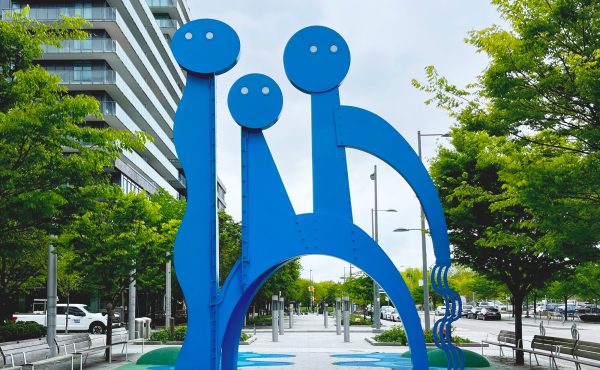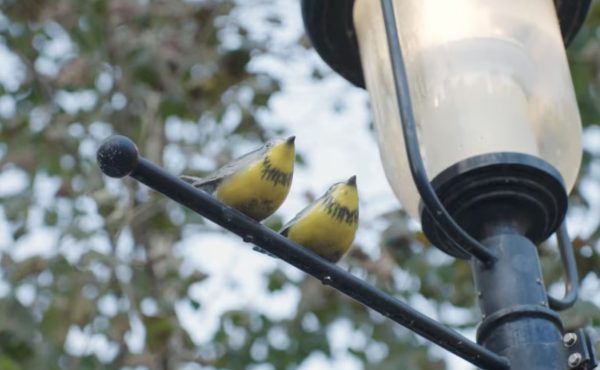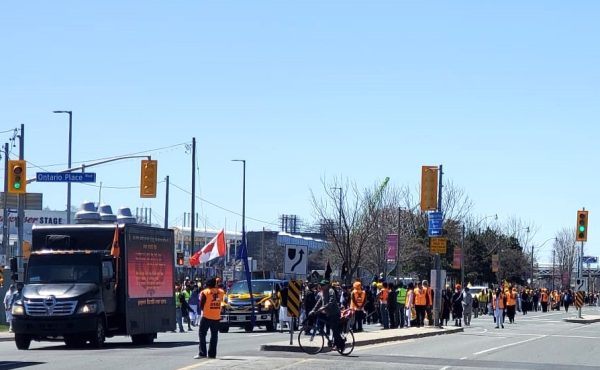
As mentioned in an earlier post, I am helping to put together “Walking Life,” an exhibition of art about walking, which will accompany the Walk21 conference in October (the deadline for submissions is August 20).
One of my co-organizers, urban planner Stephanie Tencer, has been researching other walking art projects, and she has found some very interesting ones. In recent years, walking seems to have been a significant source of inspiration for artists around the world. Here are some of the most interesting projects.
Participants are wired up with an innovative device that records the wearer’s Galvanic Skin Response (GSR), which is a simple indicator of their emotional arousal in conjunction with their geographical location. People re-explore their local area by walking the neighbourhood with the device and on their return a map is created which visualises points of high and low arousal. By interpreting and annotating this data, communal emotion maps are constructed that are packed full of personal observations which show the areas that people feel strongly about and visualise the social space of a community.
The project explores ‘desire lines’ or paths made by people who walk across fields in South Africa and across vacant lots in Detroit — and what connects them.
By examining how changing patterns of movement can alter attitudes and perceptions; how people make their own paths; and the influences of culture, geography, language, economics and love, The Walking Project asks how and why people’s paths cross and how taking a different path might alter a life.
(The Walking Project is part of a larger project called Walk & Squawk).
Tate Gallery — Journey around my world:
As part of the youth program of the Tate Gallery in London, England, eight young people from outer London and artist Gayle Chong Kwan spent six months unravelling the idea of what a map is. They created an subjective map of London based on their observations and experiences of walking through the city. The map is available as a PDF on the site.
Stephanie has also identified some other interesting walking-related web sites.
It’s not exactly art, but this Google hack is intended as a way of allowing people to map out their own walks. It’s not entirely successful yet, maybe – the screen is very crowded — but it’s a great idea. Here’s an example of a walk in Vancouver.
CABE (Commission for Architecture and the Built Environment), England:
CABE is the British government’s official expert advisory body on architecture, urban design, and public space (what a fantastic idea — perhaps some Canadian governments could consider a similar body). They have prepared lots of great resources and programs. One that’s particularly interesting is Our street: learning to see, a program that teaches children aged 7-11 become aware of and learn about the public space they use.
Another really interesting study deals with “the hidden dangers of risk aversion” — the problem in which a fear of any risk whatsoever leads to bland and unstimulating public spaces. It’s a problem that crops up constantly in Toronto in little-noticed ways (for example, it caused some of the delays in the new HtO park, and fears that fire trucks may be slowed down prevents street-narrowing projects that would in fact make streets safer for pedestrians). CABE says it wants to promote “a balanced approach to risk” rather than “designing as if the public is stupid.”
Design Trust for Public Space:
This organization has a similar mandate to CABE, but for New York — “improving public spaces for all New Yorkers.” Their projects include “Greening infrastructure in the public right-of-way” and sponsoring the creation of photo essays of public spaces (“Photo Urbanism“).
photo by Adam Krawesky



